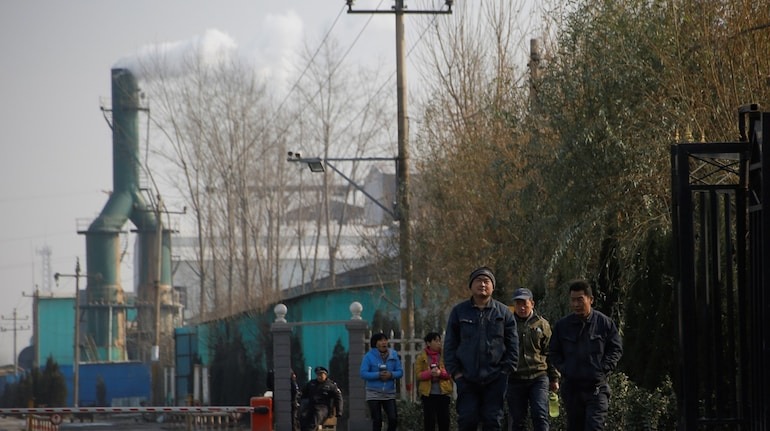
China, once the global hub for low-end manufacturing, is rapidly losing its dominance in this sector. Rising wages, geopolitical tensions, and fierce competition from countries like Vietnam and Indonesia are accelerating factory closures and job losses, particularly in regions like Guangdong.
Producers like Zhou Yousheng, once thriving with businesses like footwear manufacturing, now face declining orders and shuttered operations. Over the last decade, China’s global share of footwear exports alone has dropped by 10 percentage points.
Labour Force Shrinks, Youth Avoid Factory Jobs
China’s labor force is steadily contracting, projected to fall from over 900 million in 2011 to around 700 million by 2050. Meanwhile, younger and better-educated workers are shunning traditional factory work, describing it as “dirty, hard, and tiring.”
While large manufacturers like GAC’s electric vehicle plant in Guangzhou are reducing human labor and embracing robotic systems to cut costs, smaller factories struggle to afford automation, hastening their decline or acquisition by larger players.
Mass Layoffs Across Traditional Sectors
The shift has had a severe impact:
7.4 million jobs were lost in China’s manufacturing-intensive sectors between 2011 and 2023.
Textile manufacturing employment dropped by 40% from 2011 to 2019.
Industrial parks designed to revive traditional industries now report significant underemployment or near-vacancy.
“China exploited its comparative advantage in cheap labour, but that game is now up,” said Frederic Neumann, Chief Asia Economist at HSBC.
Automation Fuels Labour Protests and Inequality
The rise of automation has led to a spike in labour unrest, with 452 recorded protests in China’s manufacturing sector last year—marking a decade-high, according to the China Labour Bulletin.
Displaced workers, mainly rural migrants with limited education, are often excluded from formal unemployment statistics. This not only creates blind spots in economic data but also risks dampening consumer demand and widening the inequality gap.
“Massive automation is causing job losses in ways that might not be easy to counter,” warned Stanford researcher Scott Rozelle, cautioning against potential political instability.
Xi Jinping’s High-Tech Push Faces a Jobs Deficit
President Xi Jinping continues to champion “new quality productive forces,” emphasizing AI, robotics, and electric vehicles (EVs) as future economic pillars. However, experts argue that these emerging sectors won’t create enough jobs to absorb the millions being displaced from traditional industries.
Even as government initiatives aim to retrain workers and stabilize industries, officials acknowledge the real risk of additional job losses during the transition.
“We want to make new jobs,” a government source said, “but the disruption is real.”
The Dilemma: Progress vs. Social Stability
As China races toward technological leadership, it faces a growing dilemma: how to protect the livelihoods of the workers who once built its economic foundation. The long-term success of China’s modernization drive may depend on how effectively it balances innovation with inclusive growth.

 Share
Share


